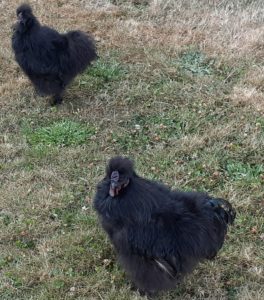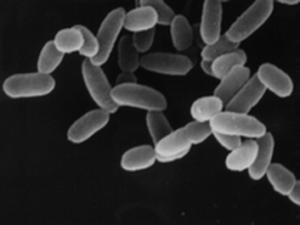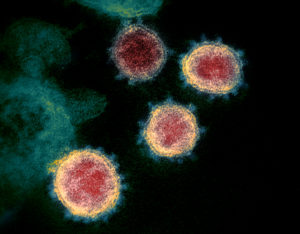 Well, the following findings make total sense. A recent study found that organic meat (beef, pork, chicken, turkey) is less likely to be contaminated by harmful bacteria, including multidrug resistant bacteria. These findings hold even if it is processed in a place that also processes non-organic (conventional) meat. But the best results are if organic meat is processed at a processing facility that only handles organic meat.
Well, the following findings make total sense. A recent study found that organic meat (beef, pork, chicken, turkey) is less likely to be contaminated by harmful bacteria, including multidrug resistant bacteria. These findings hold even if it is processed in a place that also processes non-organic (conventional) meat. But the best results are if organic meat is processed at a processing facility that only handles organic meat.
One interesting finding was that the type of meat processing facility also mattered. Conventional meat that is processed by a "split-processing" facility (processes both organic and conventional meat) had lower rates of multidrug resistant bacteria contamination than processing facilities that only handle conventional meat. This could be because disinfection has to take place in-between processing of organic and conventional meat batches.
This antibiotic use and resistant bacteria association has been known for years for both humans and animals. If antibiotics and other antimicrobials are avoided whenever possible, then bacteria are less likely to mutate, and there is a lower incidence of multidrug resistant microbes.
Bottom line: try to eat organically grown meat whenever possible. It's better environmentally and better for health.
From Science Daily: Organic meat less likely to be contaminated with multidrug-resistant bacteria
Meat that is certified organic by the U.S. Department of Agriculture is less likely to be contaminated with bacteria that can sicken people, including dangerous, multidrug-resistant organisms, compared to conventionally produced meat, according to a study from researchers at the Johns Hopkins Bloomberg School of Public Health. ...continue reading "Organic Meat Less Likely To Be Contaminated By Harmful Bacteria"



 Another reason to get more active - a new
Another reason to get more active - a new  The millions of bacteria, fungi, viruses (human microbiome) that live on and within us are extremely important for our health in all sorts of ways. The birth experience (as the baby travels down the birth canal) is one way that a mother's microbes get transmitted to the baby ("seeds" the baby's microbiome). But babies born by Cesarean delivery start out picking up different species of microbes - from dust in the operating
The millions of bacteria, fungi, viruses (human microbiome) that live on and within us are extremely important for our health in all sorts of ways. The birth experience (as the baby travels down the birth canal) is one way that a mother's microbes get transmitted to the baby ("seeds" the baby's microbiome). But babies born by Cesarean delivery start out picking up different species of microbes - from dust in the operating  It turns out that people experiencing a major depression have differences in their gut microbiome (community of microbes) when compared to healthy people who are not depressed. A persistent and prolonged period of extreme sadness or depression is called a major depressive disorder (MDD).
It turns out that people experiencing a major depression have differences in their gut microbiome (community of microbes) when compared to healthy people who are not depressed. A persistent and prolonged period of extreme sadness or depression is called a major depressive disorder (MDD). Some good news for those with Rh negative blood (whether it is A, B, AB, or O), and also for those with type O blood. A large
Some good news for those with Rh negative blood (whether it is A, B, AB, or O), and also for those with type O blood. A large  To boost the immune system of young children, as well as improve their skin and gut microbiomes - send them out daily to play in a natural environment. That means outdoors in a natural park-like setting with grass, plants, soil, and trees. Yes, germs and dirt!
To boost the immune system of young children, as well as improve their skin and gut microbiomes - send them out daily to play in a natural environment. That means outdoors in a natural park-like setting with grass, plants, soil, and trees. Yes, germs and dirt!